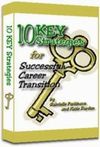Historically, having a significant gap in your professional employment has been viewed as a draw back or potential red flag on your professional resume.
However, given that a May Gallup poll showed that 19% of the American population is underemployed (either not working or working part-time instead of full-time), there are many, many job seekers out there wondering how to handle this resume issue. The good news is that there are ways to present gaps in employment that minimize their impact on your resume.
Fill the gap.
Hiring managers receive dozens of applications for every job they post these days. They know as well as anyone how tough the current job market is. Because of this, employers are far less likely to stigmatize a job seeker who shows a recent gap in their employment history—the key is to fill that gap with something that shows that you care about your career.
Take educational or professional enrichment courses.
One simple way to keep yourself sharp as a professional is to take a class while you’re looking for work. Depending on your financial situation and available time, there are many options for professional development. Many universities offer continuing education classes in subjects like writing grants or preparing taxes. There are also online training programs for licensed professions such as real estate sales. If finances are a concern, you can take affordable classes through your local parks and recreation department or library system.
Become a consultant for those in your network.
Working less than full time doesn’t mean you automatically forget all the expertise you’ve gained from working in your field. Using your network to obtain consulting gigs not only allows you to earn some income, but it gives you recent experience to discuss on your resume and in interviews.
Pick up freelance work.
I know a copy editor who has been unemployed for 15 months now. He’s been working as a freelancer over the Internet while he’s been searching for a full-time position. Given the current economic conditions, he knows that it’s a logical alternative to doing nothing at all. And should this year-long gap even come up at an interview, he knows that his freelancing experience will not only provide a reasonable explanation but also show the potential employer his initiative and ability to persevere under adverse conditions.
Dedicate your time as a volunteer.
Volunteering is particularly helpful to those who are hoping their next job will be in a field different from their last one. If you don’t have professional experience in something like marketing, volunteer to promote a fund-raiser for a local nonprofit—they’d love the help, and you instantly possess some marketing experience.
If you’re currently paying your bills by working a job for which you’re overqualified, it’s OK to mention it when applying for a new position. Employers appreciate the honesty. “I’m waiting tables right now while I look for full-time work,†is a statement that shows you’re flexible, humble, and willing to get your hands dirty when it’s needed! It also shows your commitment to doing what it takes which is a great asset as an employee and employers will take notice.
For a free resume analysis submit your resume via e-mail to info@greatresumesfast.com. View professionally-written resume samples at
http://www.greatresumesfast.com.
Author:
Jessica Holbrook is an expert resume writer, career and personal branding strategist, author, speaker and President/CEO of Great Resumes Fast. She creates high-impact, best-in-class, resumes and cover letters that win interviews. For a free resume analysis visit http://www.greatresumesfast.com/ or for a free phone consultation call 1.800.991.5187.
 These 10 Key Strategies are the basis of our popular and acclaimed eBook Program of the same name. The program includes articles, exercises, RealAudio clips and several unique bonuses, all for the incredibly inexpensive price of $14.95. To find out more about the eBook, or to Order Your Own Copy Today,
These 10 Key Strategies are the basis of our popular and acclaimed eBook Program of the same name. The program includes articles, exercises, RealAudio clips and several unique bonuses, all for the incredibly inexpensive price of $14.95. To find out more about the eBook, or to Order Your Own Copy Today,